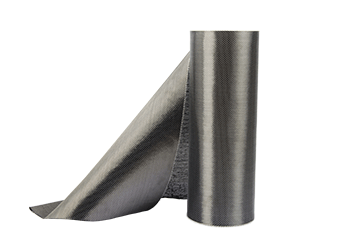Solutions
Horse Construction offers full range of structural strengthening materials with technical supports, documentation supports, products supports, project supports.
Similar to concrete structures, under the long-term effects of external environment and loads, steel structures will also inevitably suffer various damages and defects. The long-term accumulation of damage to the steel structure will cause the structural mechanical properties to deteriorate and even cause structural failure. To ensure the safety of the structure and save resources, the steel structure must be reinforced.
Compared with the most common concrete structures, steel structures have obvious advantages. The steel structure has light weight, good seismic performance, and high resource recovery value. It is called a reusable and environmentally friendly green building. Nowadays, the number of steel structures also marks the economic strength of a country or region. After the country proposed "active and reasonable use of steel" in construction, the number of steel structures in China is also increasing year by year.
Similar to concrete structures, under the long-term effects of external environment and loads, steel structures will also inevitably suffer various damages and defects. The long-term accumulation of damage to the steel structure will cause the structural mechanical properties to deteriorate and even cause structural failure. To ensure the safety of the structure and save resources, the steel structure must be reinforced.
Traditional strengthening method for steel structure
In steel structure reinforcement, the most traditional method is welding reinforcement. Welding reinforcement means welding the metal cover plate or section steel at the damaged part of the structure, which plays a role of strengthening and reinforcing the steel structure. Welding reinforcement has a long application time and high technical maturity, but there is a risk that the material properties will deteriorate after welding and the degree of influence by the operator will be high.
In addition, the steel structure can also be reinforced by opening holes in the original steel structure and using riveting and screwing. This method weakens the cross section at the opening, generates new stress concentrations, and is greatly affected by the material, which makes it difficult to guarantee the reinforcement effect.
Application of carbon fiber cloth on steel structure
The good effect of carbon fiber cloth in concrete reinforcement has attracted attention in the reinforcement of steel structures. Compared with traditional repair methods in steel structures, carbon fiber cloth reinforcement has obvious advantages. Carbon fiber cloth reinforcement basically does not increase the weight and size of the original structure. The most important thing is that carbon fiber cloth reinforcement does not require holes or welding, and will not cause damage to the steel structure, ensuring the strength and integrity of the original structure.
Based on a large number of tests and engineering examples of carbon fiber cloth to strengthen steel structures, it has been proved that carbon fiber cloth can effectively strengthen steel structures, especially damaged and fatigued structures, and can effectively improve the structural bearing capacity and extend the life of the structure.
So far, the application of carbon fiber cloth in steel structures has not reached the maturity of concrete structure reinforcement. Due to the differences between the two substrates, it is much more difficult to strengthen steel structures with carbon fiber cloth than concrete structures.
You can find anything here you are in need of, have a trust trying on these products, you will find the big difference after that.

High strength, unidirectional carbon fiber wrap pre-saturated to form a carbon fiber reinforced polymer (CFRP) wrap used to strengthen structural concrete elements.

High strength, unidirectional carbon fiber fabric pre-saturated to form a carbon fiber reinforced polymer (CFRP) fabric used to strengthen structural concrete elements.

High strength, unidirectional carbon fiber sheet pre-saturated to form a carbon fiber reinforced polymer (CFRP) sheet used to strengthen structural concrete elements.